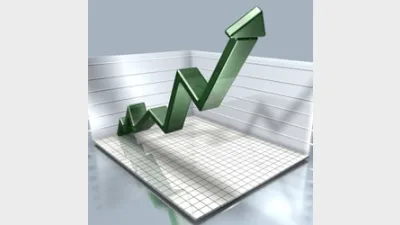Performance speaks for itself - the case for active fund managers



Following on from his article earlier this year, Mark Thomas continues to support the active fund cause.
I must say that I was greatly encouraged by the interest in my article titled “Prepare for another perfect storm” (Money Management, July 15).
Unashamedly, van Eyk Research does have a vested interest in arguing that active managers offer investors a relevant choice.
There are many living, breathing examples to support this thesis.
Consider Warren Buffett, Ben Graham, Peter Lynch, Paul Tudor Jones, George Soros, Robert Maple-Brown, Sir Ron Brierley, Kerr Neilson and Greg Perry to name but a few from the last 100 years.
At van Eyk Research, we measure the performance of our research by monitoring the performance of our ‘AA’ and ‘A’ rated fund managers over time.
Our records date back to 1993 and show that we have added 2.7 per cent a year picking active Australian equities managers and 3.12 per cent a year picking active global equity managers compared with their relevant passive benchmarks.
Over this period, had an investor followed this simple universe, the compound additional return over a passive index fund would have been $135,507 if you invested $100,000 in a portfolio of 50 per cent Australian equities and 50 per cent global equities.
For the doubters, I would say do some homework — there is plenty of independent material on the topic. I would highly recommend a book written by James O’Shaughnessy entitled What works on Wall Street.
O’Shaughnessy was the first person who was not an employee of Standard and Poor’s (S&P) to gain access to the S&P Compustat Database.
Some claim this database to be the most important and complete repository of fundamental and technical stock data in the world.
The project that inspired this book was to computer back test the data using various fundamental formula searches in order to find out what styles of investment have actually made profits over the past 50 years.
It is a solid read (366 pages), but worth the time and effort. In brief, these are O’Shaughnessy’s findings:
- Small capitalisation strategies owe their superior returns to micro-cap stocks with a market capitalisation below $25 million. These stocks are too small for virtually any investor to buy.
- Buying stocks with low price earnings ratios (PERs) is most profitable when you stick to larger, better known issues.
- Price-to-sales ratio is the best value ratio to use for buying market-beating stocks.
- Last year’s biggest losers are the worst stocks to buy this year.
- Last year’s earnings gains alone are worthless in determining what a stock will do this year.
- You can beat the S&P 500 by four times if you concentrate on large, well-known stocks with high dividend yields.
- Relative strength is the only growth variable that consistently beats the market.
- Buying the most popular issues with the highest PERs is one of the worst approaches.
- Risk is one of the most important elements to consider in a strategy.
- Combining growth and value strategies is the best way to improve your investment performance.
About 10 years ago, van Eyk Research developed a tool to cover the top 300 Australian shares.
Much of the thinking behind this large calculator was the book written by O’Shaughnessy, as well as some tried and tested rules employed by Warren Buffet and his tutor, Ben Graham.
This tool recalculates the value of 300 shares every 20 minutes based on more than half a dozen methods, such as Warren Buffet’s owners’ earnings, Ben Graham’s intrinsic value, as well as his most famous method, the net-net asset value, whereby a share price should be no more than two-thirds of a company’s net assets after deducting long-term debt.
In 1934, Graham published an 850-page tome called Securities Analysis.
For those interested, it’s a fascinating read outlining how sensible investors (not speculators) can make money by buying mispriced stocks.
Some regard this book as the bible of value investing.
Buffet, a pupil of Graham, commented: “I would figure that anyone would look at what’s been successful over time and try to duplicate it. It amazes me that so few people actually try this.”
Index funds work in a trending market as I outlined in “Prepare for another perfect storm”.
However, in dysfunctional market conditions the index can trend sideways for decades; for example, 1906 (13 years, seven months), 1937 (13 years) and 1966 (15 years, nine months).
All our research points to a dysfunctional market for the foreseeable future and index funds, exchange traded funds and so on are likely to lag in performance compared with a disciplined active stock selection process.
None of what I have said above contradicts those who currently advocate term deposits.
A real return of 3 per cent to 4 per cent a year should be regarded as an attractive investment every day of the week, and this is exactly what term deposits currently offer — and for zero risk thanks to the government guarantee.
While this is on offer it makes absolute sense according to any school of investment.
Mark Thomas is chief executive officer at van Eyk Research.
Recommended for you
In this episode of Relative Return Insider, host Keith Ford and AMP deputy chief economist Diana Mousina break down the spike in inflation numbers and what it means for the possibility of a rate cut as we move into the new year.
In this episode of Relative Return Insider, host Keith Ford and AMP economist My Bui explore Prime Minister Anthony Albanese’s trip to the US and the critical minerals deal stemming from his meeting with President Donald Trump.
In this episode of Relative Return Insider, host Keith Ford and AMP chief economist Shane Oliver unpack the latest unemployment numbers and what they mean for a rate cut, as well as how the latest flare-up in the ongoing US–China trade dispute has highlighted the remaining disparity between gold and bitcoin.
In this episode of Relative Return Insider, host Keith Ford and AMP chief economist Shane Oliver take a look at the unfolding impacts and potential economic ramifications of the US government shutdown and the surge in gold and bitcoin prices.







